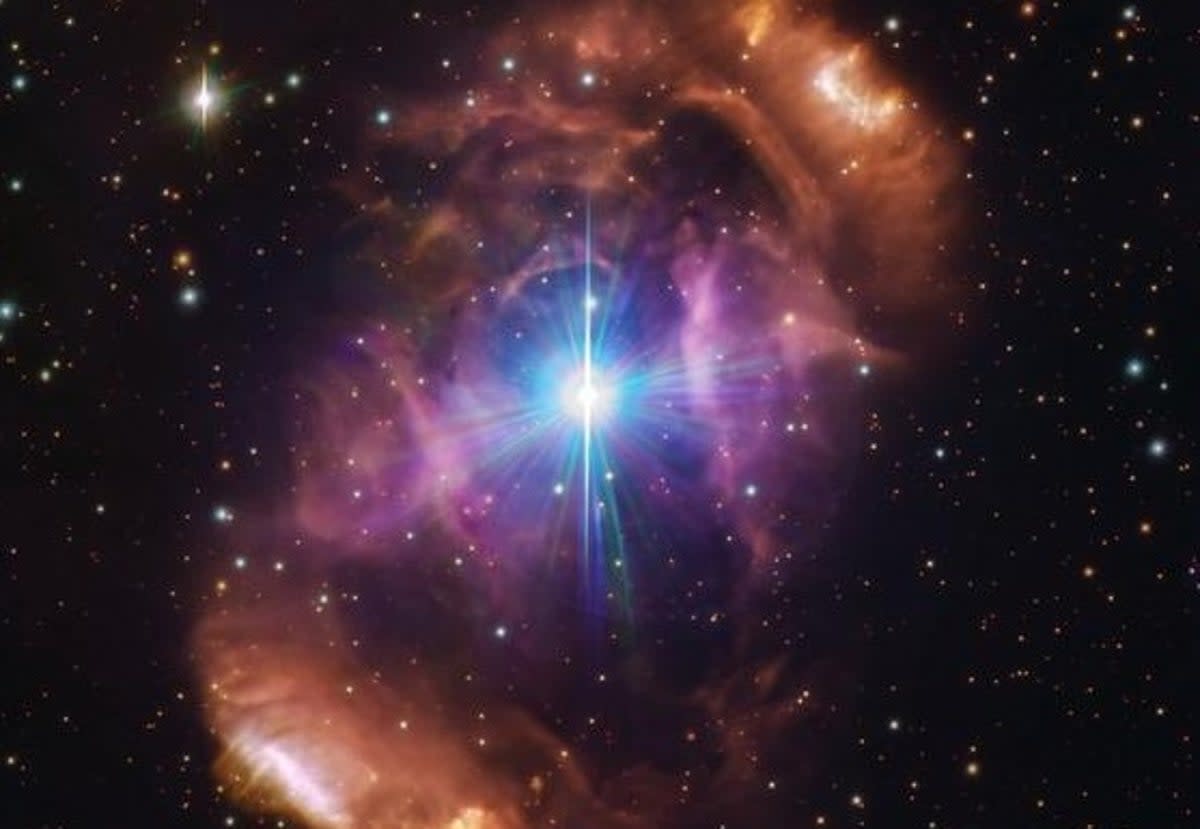Scientists shocked by 1.5 million year age gap between two stars

Scientists believe they have found the explanation for a shocking age gap between two very strange stars.
The pair, located thousands of light years away, has a 1.5 million year old difference between their two ages.
Pairs of stars are usually much the same age, being born like twins, researchers said. But in the HD 148937 star system, the more massive star is at least 1.5 million years younger.
There are yet more mysteries about the system: it is surrounded by a nebula that is much younger than both, and is made of elements that usually are found inside the star itself.
Researchers believe that another third star permanently changed the fate of the system, and is responsible for the unusual nature of the pair.
Analysing data from the European Southern Observatory (ESO), it believes there were originally three stars in the system but two of them clashed and merged, creating a “beautiful” cloud of gas and dust, or nebula, surrounding HD 148937.
This merger likely occurred around 2.6 million years ago, where the newly formed star also became magnetic, unlike its older counterpart.
The researchers said their findings, published in the journal Science, helps solve two long-standing mysteries: why two stars in this binary star system have a huge age difference, and how massive stars - with a mass that is eight or more times that of the Sun - get their magnetic fields.
Hugues Sana, a professor at KU Leuven in Belgium and the principal investigator of the observations, said: “We think this system had at least three stars originally; two of them had to be close together at one point in the orbit whilst another star was much more distant.
“The two inner stars merged in a violent manner, creating a magnetic star and throwing out some material, which created the nebula.
“The more distant star formed a new orbit with the newly merged, now-magnetic star, creating the binary we see today at the centre of the nebula.”
Dr Abigail Frost, an astronomer at ESO in Chile, added: “A nebula surrounding two massive stars is a rarity, and it really made us feel like something cool had to have happened in this system.
“When looking at the data, the coolness only increased.
“After a detailed analysis, we could determine that the more massive star appears much younger than its companion, which doesn’t make any sense since they should have formed at the same time.”
A team of international scientists analysed nine years’ worth of data from HD 148937, which is around 3,800 light years away from Earth, located in the direction of the Norma constellation.
The data came from ESO’s Very Large Telescope Interferometer (VLTI) and is located in the Atacama Desert in Chile.
While magnetic fields are common in low-mass stars like the Sun, more massive stars cannot sustain magnetic fields in the same way.
Yet roughly 7% of massive stars have been observed to have magnetic fields, scientists say.
While astronomers had suspected for some time that massive stars could acquire magnetic fields when two stars merge, this is the first time scientists have found direct evidence of it happening.
Dr Frost said: “Magnetism in massive stars isn’t expected to last very long compared to the lifetime of the star, so it seems we have observed this rare event very soon after it happened.”
Additional reporting by Press Association
